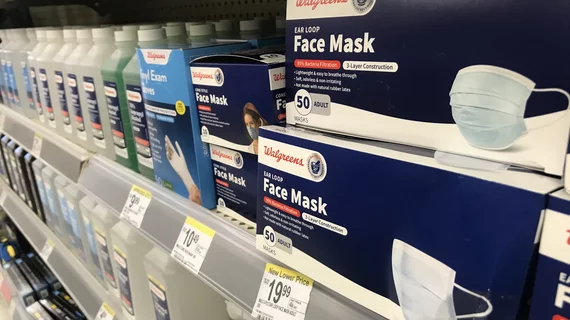HHS issues guidance as COVID-19 PHE winds down
The Department of Health and Human Services (HHS) has issued a guidance as it plans to end the public health emergency declared at the start of the COVID-19 pandemic. The guidance is a transition roadmap for healthcare providers to be prepared for the end of the PHE on May 11.
HHS announced it will end the PHE in May after continually renewing it since early 2020. The PHE enabled more flexibility during the pandemic to ensure more Americans had access to healthcare and more healthcare providers could quickly rise to new challenges and meet the evolving public health needs of the country. Congress and the Biden administration have shored up some of the flexibilities in the PHE, such as continued benefits for telehealth care services and transitioning those who became eligible during the PHE for Medicaid to other health insurance options.
A fact sheet published by HHS highlighted what will and will not be affected by the end of the PHE. Namely, the administration was clear that access to COVID-19 vaccinations and treatments, “such as Paxlovid and Lagevrio, will generally not be affected.” However, out-of-pocket expenses are likely to change for Americans, depending on health insurance coverage, which could affect vaccination numbers.
“Medicaid programs will continue to cover COVID-19 treatments without cost sharing through September 30, 2024,” the fact sheet stated. “After that, coverage and cost sharing may vary by state.”
Emergency use authorizations (EUAs) for COVID-19 vaccines and treatments will also not be affected, HHS confirmed, as well as “major Medicare telehealth flexibilities” and Medicaid telehealth flexibilities.
What will be affected includes some of the Medicare and Medicaid waivers and broad flexibilities for healthcare providers that “are no longer necessary.”
“During the COVID-19 PHE, CMS has used a combination of emergency authority waivers, regulations, and sub-regulatory guidance to ensure and expand access to care and to give health care providers the flexibilities needed to help keep people safe,” HHS said. “States, hospitals, nursing homes and others are currently operating under hundreds of these waivers that affect care delivery and payment and that are integrated into patient care and provider systems.”
These flexibilities that temporarily expanded facility capacity to respond to the heightened demands during the worst of the pandemic are no longer needed, the agency maintained––”given the current state of COVID-19, this excess capacity is no longer necessary.” The end of the PHE will also change reporting requirements to the Centers for Disease Control and Prevention (CDC), with HHS losing the ability to require lab test reporting for COVID-19.
In addition, the end of the PHE will impact providers’ ability to prescribe medications such as buprenorphine without an in-person visit, though rulemaking proposes extending these flexibilities.
In addition to the transition roadmap, HHS Secretary Xavier Becerra sent a letter to U.S. governors providing 90 days’ notice before the PHE ends. According to Becerra, the pandemic situation in the U.S. has improved significantly enough to transition out of the PHE. He cited a 92% drop in daily COVID-19 reported cases, 80% decline in COVID-19 deaths and a nearly 80% decline in new COVID-19 hospitalizations.
“We have come to this point in our fight against the virus because of our historic investments and efforts to mitigate its worst impacts,” Becerra wrote. “Addressing COVID-19 remains a significant public health priority for the Administration, and over the next few months, we will transition our COVID-19 policies, as well as the current flexibilities enabled by the COVID-19 emergency declarations, into improving standards of care for patients. We will work closely with partners including state, local, Tribal, and territorial agencies, industry, and advocates, to ensure an orderly transition.”

